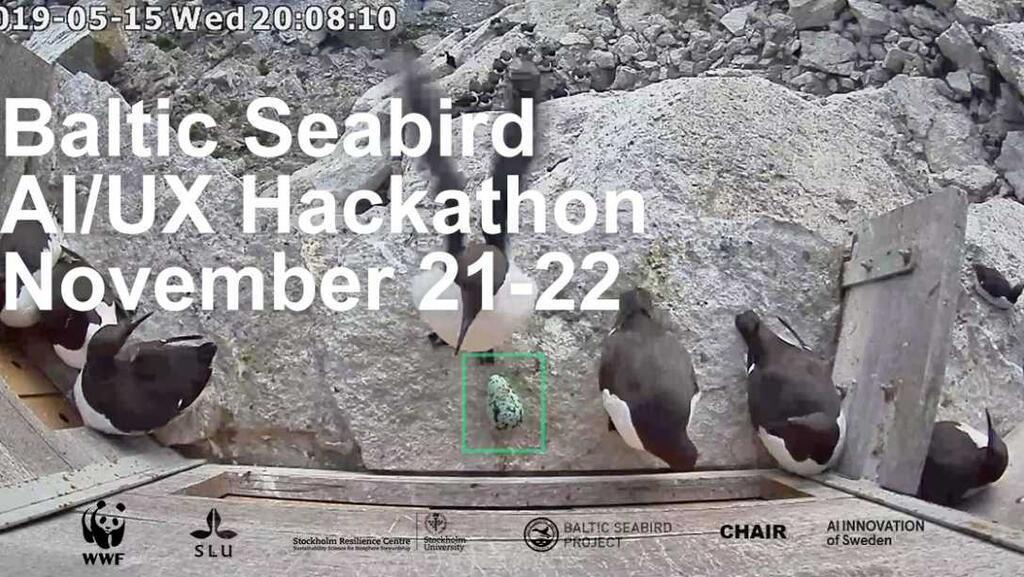Baltic Seabird Hackaton
Guillemots return to the same ledge on Stora Karlsö, outside Gotland every spring, to lay eggs and raise their chicks. This year, they were filmed during their spring months and the extensive material holds plenty of interesting insights. But how do you structure 2000 hours of filmed material? Identifying and analyzing behaviors, events, and abnormalities is a time-consuming task for researchers. Enter AI and citizen science.


A two day Hackathon to accelerate research
A two-day hackathon will be held at AI Innovation of Sweden in Gothenburg, with the aim of accelerating the research of guillemots and about the sensitive ecosystems of the Baltic Sea. Data scientists, programmers, and UX designers teamed up with WWF, the Swedish University of Agriculture (SLU), Stockholm Resilience Center, the Baltic Seabird Project, and AI Innovation of Sweden, to work out ways to structure data on the seabirds.
The hackathon showed the interesting results that can be achieved when professions from different areas of expertise share data and methods. Among the presentations were exciting applications of machine learning models on the annotated video material provided by WWF and SLU, together with ideas for how to involve and educate the public about seabirds and ocean health.
A model project in fast-forward
This particular hackathon can also be viewed as a sped-up version of the typical Data Factory project. They all orbit around AI acceleration, providing connections and resources needed to see progress. Projects may vary in approach and conditions, but all share similarities with the Baltic Seabird Hackathon, as they in one way or another connect a problem and experts in that field, with AI expertise and the right resources, such as data and the infrastructure required.
Winner of 10, 000 SEK was Team SkyRoads – Sheetal Reddy, Jayanth Reddy, Siddhartha. The team also received a trip including accomodation to Stora Karlsö, where the Guillemots mate and the filmed material is live streamed and recorded from a man-made ledge.
Success factors in this hackathon were:
- Biologists and researchers with qualitative data in their hands and ideas for what might be achieved leveraging this data with artificial intelligence and machine learning.
- Annotation of the data (in this case filmed material) with the area of use in mind.
- Data Factory infrastructure and resources.
- Data scientists and AI experts using pre-trained models.
With data of good quality and proper annotation, data scientists and programmers can start to test ideas of what can be extracted using algorithms and pre-trained models. With collaboration, cross-industry sharing, resources, and infrastructure, exciting things can happen!
Facts
Project partners: WWF, SLU, Stockholm Resilience Centre, Baltic Seabird project, Chalmers AI Research Centre, AI Sweden. With support from: Ocean Data Factory Sweden, SMHI, Swedish Space Data Lab, CGIT, Annotell and Zenuity
Project period: 201911
The topic: The Baltic Sea-Bird Hackathon
Jonas Hentati Sundberg, Scientist SLU Aqua about the Baltic Sea-Bird Hackathon
Contact


